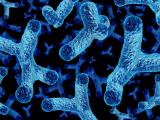A new report from the World Organization for Animal Health (WOAH) illustrates the devastating impact that antimicrobial resistance (AMR) could have on food-producing animals, food security, and the global economy.
Using data from 204 countries, the report estimates that, without further action to mitigate AMR, annual livestock production losses from drug-resistant bacteria could equal the consumption needs of 746 million people and result in a cumulative global gross domestic product (GDP) loss of $575 billion by 2050. Livestock losses would be heaviest in cattle and poultry meat production and more pronounced in low- and middle-income countries (LMICs)
That's in a scenario of very low resistance. In a more pessimistic scenario, the modeling study estimates AMR could jeopardize the food supply of more than 2 billion people and lead to a cumulative GDP loss of $953 billion. Furthermore, the potential spread of resistant pathogens from food-producing animals to people—and the resulting impact on human productivity—could cause cumulative GDP losses ranging from $1.1 trillion to $5.2 trillion by 2050.
AMR impact 'cannot be overlooked'
The report, released this week ahead of the United Nations High-Level Meeting on AMR, is the first to comprehensively forecast the health and economic burden of AMR on food-producing animals. It was released together with two other reports from the EcoAMR consortium that forecast the health and economic impacts of AMR in humans.
WOAH Director-General Emmanuelle Soubeyran, DVM, said the results highlight the economic case for investment in the fight against AMR.
"The threat of drug-resistant infections to human health is widely recognized but the impact of AMR on the health of animals, our environment and our economy cannot be overlooked," Soubeyran said in a WOAH press release. "For the first time, we have an idea of exactly what's at stake unless the global community takes urgent action now."
Produced by experts at WOAH, RAND Europe, Animal Industry Data, and Birmingham City University, the forecast simulates how common livestock bacterial diseases, and treatment failure resulting from resistant infections, would affect production in different livestock sectors. The model focused on cattle, chicken, and swine and five different goods from those sectors (cattle meat, cattle milk, swine meat, chicken meat, and chicken eggs).
Various scenarios assessed
The very low-resistance scenario assumes resistance rates of 5% across all pathogens and regions, while the pessimistic scenario assumes a doubling of the AMR-attributable disease burden in all regions. Both scenarios were compared with current levels of antimicrobial use (AMU) and rates of resistance in food animals. The projected productivity effects were then analyzed in a macroeconomic model to assess wider economic impacts.
Two other scenarios modeled the spillover effect that rising AMR in livestock could have on human labor productivity, with one estimating a 1.5% impact and the other a 3% impact.
For the first time, we have an idea of exactly what's at stake unless the global community takes urgent action now.
The study authors note that even though the evidence on the existence and magnitude of the transmission of drug-resistant bacteria between food-producing animals and people is up for debate, it was important to include estimates of the potential impact.
"Given the indiscriminate use of antimicrobials in many settings and geographies, the increase in resistant infections in both animals and humans, and the subsequent threats to food security due to production losses, it is critical to focus efforts on understanding the mechanisms and scale of impact of AMR in the greater context of agriculture," the authors wrote.
Reducing need for antibiotics could bring benefits
But the study also included a scenario that highlighted the potential economic gain from interventions that aim to reduce AMU and mitigate AMR in food-producing animals. The result of that projection estimated that if global AMU in food-producing animals were reduced by 30% across all regions within the next 5 years, cumulative GDP would rise by $120 billion by 2050.
The authors say that mitigating the potential economic impacts of AMR in food production will require countries to prioritize reducing the burden of disease in animals, which will in turn reduces the need for antibiotics. That could be achieved through several strategies, including vaccination, evidence-based antibiotic alternatives, good farm-management practices, and phasing out the use of antibiotics for growth promotion—a practice that still occurs in 20% of countries worldwide.
Other recommendations include strengthening surveillance for antibiotic use and AMR in livestock, educating farmers on AMR, training veterinarians on the responsible and prudent use of antibiotics in food-producing animals, and rewarding farmers who comply with policies and regulations.
"By mitigating resistance rates by interventions that target AMU and AMR, economic benefits can be realised that potentially outweigh the costs of implementation," the authors wrote.























